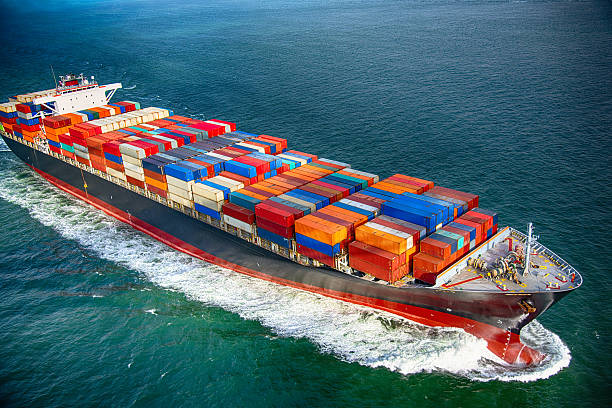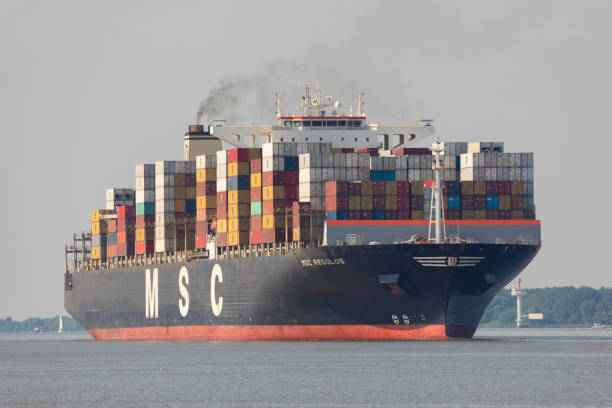Discover comprehensive insights into Rena monrovia when you transport something by car … with lessons from Rena Monrovia. Learn about planning, safety, and best practices for efficient transport.
Introduction
Transporting goods by car, especially in complex scenarios like those encountered by Rena Monrovia, involves a multifaceted approach that ensures safety, efficiency, and compliance with regulations. The process is intricately linked to planning, execution, and monitoring, where every detail plays a crucial role in ensuring that the transport process is seamless and problem-free. This comprehensive guide aims to shed light on the essential aspects of transporting items by car, drawing from the lessons learned from the Rena Monrovia incident and related experiences.
Understanding the Rena Monrovia Context
Rena Monrovia’s case offers valuable insights into the challenges and best practices for transporting goods by car. The Rena Monrovia incident, though primarily a maritime disaster, underscores the importance of meticulous planning and adherence to safety protocols. Understanding the context and implications of such an event can greatly enhance the approach to road transport. By examining the parallels between maritime and road transport, one can draw lessons that apply to car-based logistics, thereby improving overall efficiency and safety.
The Importance of Proper Planning
Proper planning is the cornerstone of successful transport logistics. When you transport something by car, meticulous preparation is essential to avoid mishaps and ensure that the cargo reaches its destination intact. This involves assessing the type of goods being transported, the route to be taken, and the vehicle’s suitability for the task. Adequate planning also includes preparing for potential challenges and having contingency measures in place. For instance, understanding the weather conditions, road conditions, and potential hazards can significantly impact the transport process.

Selecting the Right Vehicle
Choosing the right vehicle is a critical aspect of transporting goods by car. The vehicle must be suitable for the type and size of the cargo being transported. This involves considering factors such as load capacity, stability, and the condition of the vehicle. For instance, transporting delicate or valuable items requires a vehicle equipped with appropriate features to ensure the safety of the cargo. Ensuring that the vehicle is in good working condition, with all necessary equipment and safety features, is crucial for a smooth transport experience.
Securing the Cargo
Securing the cargo is another vital step in the transportation process. Properly securing the load prevents shifting and potential damage during transit. This involves using appropriate restraints such as straps, ropes, and tie-downs to keep the cargo stable and secure. Additionally, for items that are fragile or susceptible to damage, additional padding and protection may be necessary. Ensuring that the cargo is well-secured not only protects the goods but also enhances road safety by preventing any potential hazards caused by shifting loads.
Navigating Regulatory Requirements
Transporting goods by car often involves navigating various regulatory requirements and compliance issues. Different regions and countries have specific regulations regarding transportation, including weight limits, vehicle standards, and safety requirements. It is essential to be aware of and adhere to these regulations to avoid legal issues and ensure the safe and legal transport of goods. Compliance with these regulations helps in preventing delays and ensures that the transportation process is conducted smoothly and within the legal framework.
Managing Logistics and Route Planning
Effective logistics management and route planning are crucial for successful transportation. This involves selecting the most efficient route to minimize travel time and avoid potential delays. Factors such as traffic conditions, road closures, and construction activities must be taken into account when planning the route. Additionally, having contingency plans for unexpected events, such as vehicle breakdowns or adverse weather conditions, ensures that the transport process remains on track and is completed efficiently.

Ensuring Vehicle Maintenance and Safety
Regular maintenance and safety checks of the vehicle are essential for preventing breakdowns and ensuring a smooth transport process. This includes routine inspections of the vehicle’s engine, brakes, tires, and other critical components. Ensuring that the vehicle is in optimal condition not only enhances safety but also reduces the risk of delays and disruptions during transportation. Regular maintenance helps in identifying and addressing potential issues before they become major problems, thereby ensuring the reliability of the vehicle.
Handling Delays and Unexpected Challenges
Despite thorough planning, delays and unexpected challenges can arise during transportation. It is crucial to be prepared for such scenarios and have strategies in place to manage them effectively. This may involve having a backup plan, maintaining communication with relevant parties, and being adaptable to changing circumstances. Addressing these challenges promptly and efficiently helps in minimizing their impact on the overall transport process and ensures that the cargo reaches its destination as planned.
Communication and Coordination
Effective communication and coordination are essential for a successful transportation process. This involves keeping all relevant parties informed about the status of the transport, including any changes or issues that may arise. Coordination between the driver, logistics personnel, and other stakeholders ensures that everyone is on the same page and can address any issues promptly. Clear and timely communication helps in avoiding misunderstandings and ensures that the transport process proceeds smoothly.
Monitoring and Tracking
Monitoring and tracking the progress of the transportation process provide valuable insights into the status of the cargo and the vehicle. Utilizing technology such as GPS tracking systems helps in monitoring the location and progress of the vehicle in real-time. This allows for timely updates and adjustments to the transport plan if necessary. Tracking the progress helps in ensuring that the transport process stays on course and that any issues are addressed promptly.

Ensuring Compliance with Safety Standards
Adhering to safety standards is crucial for ensuring the safe transport of goods by car. This includes following guidelines for loading and securing cargo, maintaining vehicle safety, and complying with traffic regulations. Ensuring that all safety protocols are followed helps in preventing accidents and protecting both the cargo and other road users. Safety should always be a top priority to avoid potential hazards and ensure a safe transport experience.
Evaluating and Improving Processes
Regular evaluation and improvement of transport processes are essential for enhancing efficiency and effectiveness. Reviewing the outcomes of each transport operation and identifying areas for improvement helps in refining processes and addressing any issues. Implementing feedback and making necessary adjustments ensures that future transport operations are conducted more efficiently and with greater success.
The Role of Technology in Transport
Technology plays a significant role in modern transportation, providing tools and systems that enhance efficiency and safety. From GPS tracking and route optimization to automated cargo handling and communication systems, technology offers numerous benefits for transport operations. Leveraging these technologies helps in streamlining processes, improving accuracy, and ensuring that the transport process is conducted smoothly and effectively.
Sustainability and Environmental Considerations
Incorporating sustainability and environmental considerations into transport operations is becoming increasingly important. This involves adopting practices that reduce the environmental impact of transportation, such as using fuel-efficient vehicles, optimizing routes to minimize emissions, and implementing eco-friendly practices. Focusing on sustainability helps in reducing the carbon footprint of transport operations and contributing to environmental conservation.

Case Studies and Lessons Learned
Examining case studies and lessons learned from past transport incidents, including those related to Rena Monrovia, provides valuable insights into best practices and areas for improvement. Analyzing these cases helps in understanding common challenges and effective solutions, contributing to more effective and efficient transport operations. Applying these lessons learned helps in preventing similar issues and enhancing overall transport practices.
Training and Skill Development
Training and skill development for personnel involved in transportation are crucial for ensuring competence and effectiveness. Providing training on best practices, safety protocols, and technology usage helps in improving the performance of drivers, logistics personnel, and other stakeholders. Investing in training and skill development contributes to the overall success of transport operations and enhances the ability to handle various challenges.
Customer Satisfaction and Service Quality
Ensuring customer satisfaction and service quality is an important aspect of transport operations. Meeting customer expectations, providing timely updates, and addressing any issues promptly contribute to a positive experience for clients. Focusing on service quality helps in building strong relationships with customers and enhancing the reputation of the transport service provider.
Risk Management and Mitigation
Effective risk management and mitigation strategies are essential for addressing potential issues and minimizing their impact. Identifying potential risks, assessing their likelihood and impact, and implementing strategies to mitigate them helps in managing uncertainties and ensuring a smooth transport process. Proactive risk management contributes to the overall success of transport operations and enhances resilience to challenges.

Future Trends in Transport
Staying informed about future trends and developments in transport helps in adapting to changing requirements and technologies. Emerging trends such as autonomous vehicles, advanced tracking systems, and innovative logistics solutions offer opportunities for enhancing transport operations. Embracing these trends and integrating them into transport practices helps in staying competitive and improving overall efficiency.
Conclusion
Rena monrovia when you transport something by car … Transporting goods by car requires careful planning, effective execution, and adherence to safety and regulatory standards. Drawing from experiences such as the Rena Monrovia incident, it is clear that meticulous attention to detail and proactive measures are essential for ensuring a successful transport process. By focusing on proper planning, vehicle selection, cargo security, regulatory compliance, and continuous improvement, one can achieve efficient and safe transport operations.
Read Also: The Taipei self-driving Gharry Tradition and Innovation
